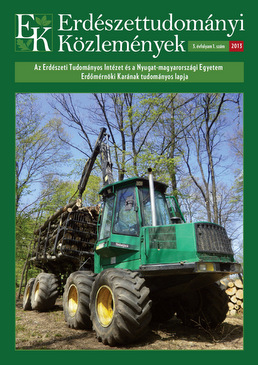State of Hungary’s forest genetic resources, 2010-2011
Sándor Bordács, László Nagy, Beáta Pintér, István Bach, Attila Borovics, Péter Kottek, András Szepesi, Zoltán Fekete, Károly Wisnovszky & Csaba Mátyás
Correspondence
Correspondence: Bordács Sándor
Postal address: H-1024 Budapest, Keleti K. u. 24.
e-mail: Bordacss[at]nebih.gov.hu
Abstract
The Food and Agriculture Organization of the United Nations (FAO) Commission on Genetic Resources for Food and Agriculture published their first reports on the state of plant and animal genetic resources in 1996 and 2007, respectively. The third such report, The State of World’s Forest Genetic Resources, is scheduled for publication in 2013. Although Hungary takes part in monitoring of conservation activities on forest genetic resources at international context, the country report for the above mentioned initiative was the first comprehensive assessment of management and conservation issues in the last decades. This paper gives a short summary of the country report, concentrating primarily on the domestic forest gene conservation strategy, measures and activities, its legislation, financial background and international aspects. Additionally, overview on the present state of genetic investigations, breeding and forest reproductive material production, marketing and deployment, based on data from 2010-2011, is also included.
Keywords: forest genetics, forest genetic resources, conservation, gene reserve, forest reproductive material
Open Acces
For non-commercial purposes, let others distribute and copy the article, and include in a collective work, as long as they cite the author(s) and the journal, and provided they do not alter or modify the article.
Cite this article as:
Bordács, S., Nagy, L., Pintér, B., Bach, I., Borovics, A., Kottek, P., Szepesi, A., Fekete, Z., Wisnovszky, K. & Mátyás, Cs. (2013): State of Hungary’s forest genetic resources, 2010-2011. Bulletin of Forestry Science, 3(1): 21-37. (in Hungarian)
Volume 3, Issue 1
Pages: 21-37
First published:
28 June 2013
Related content
11
More articles
by this authors
17
Related content in the Bulletin of Forestry Science*
(Forest reproductive materials production after the 2nd world war). Bulletin of Forestry Science, 10(1): 55-66.
More articles by this authors in the Bulletin of Forestry Science
* Automatically generated recommendations based on the occurrence of keywords given by authors in the titles and abstracts of other articles. For more detailed search please use the manual search.
